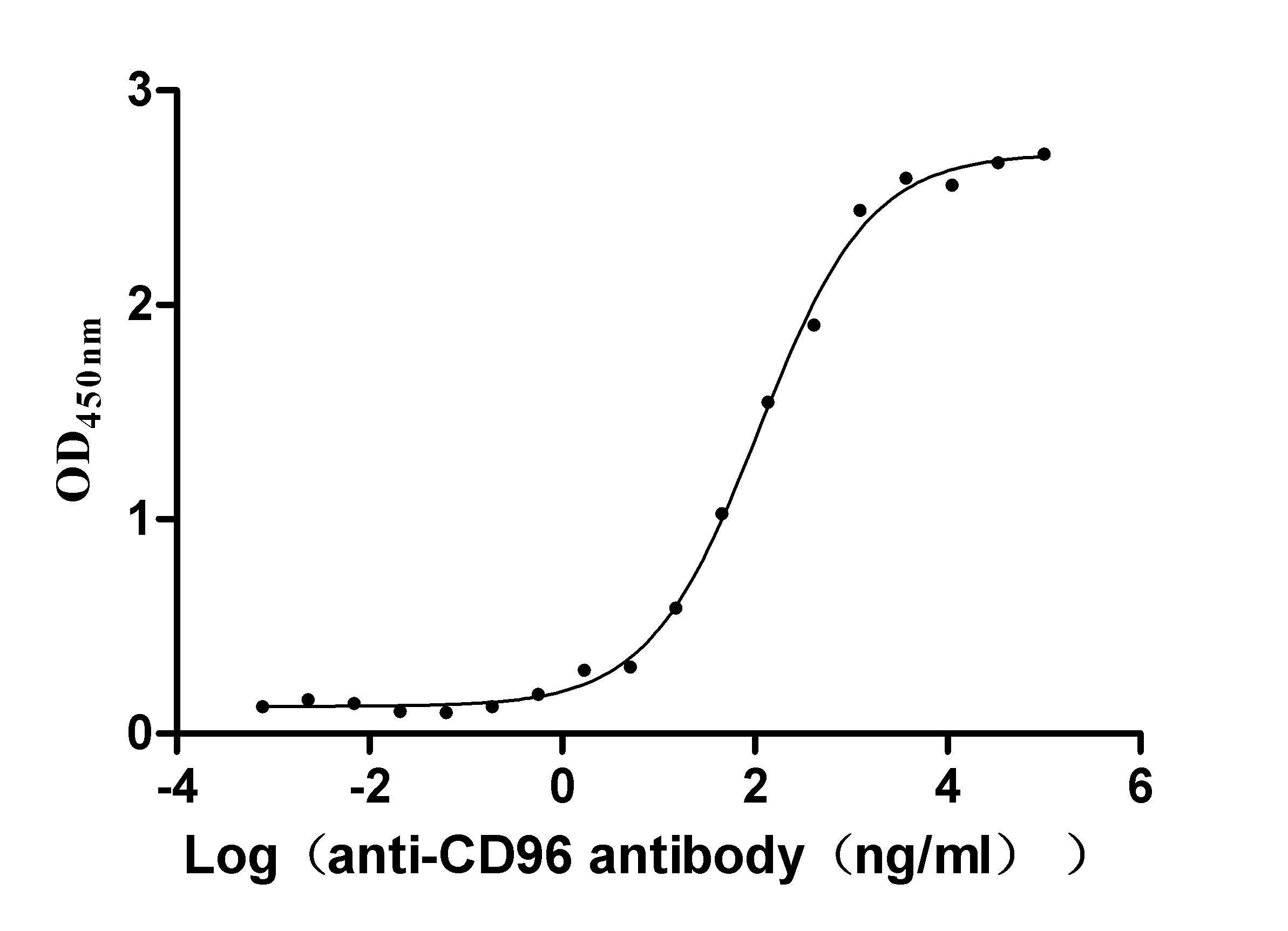The process of generating the CD96 recombinant monoclonal antibody is complex and consists of several stages. Firstly, the CD96 monoclonal antibody is collected, and its gene sequence is analyzed. Next, a vector containing the CD96 monoclonal antibody gene is constructed and transfected into a host cell line for culturing. During the CD96 monoclonal antibody production, a recombinant human CD96 protein is used as an immunogen. The CD96 recombinant monoclonal antibody is then purified using affinity chromatography and assessed for specificity using ELISA applications. It can bind to the human CD96 protein (CSB-MP004971HU1(F2)) with the EC50 of 95.78-127.1 ng/mL. It only recognizes the human species.
CD96, also known as TACTILE, is a transmembrane protein expressed on the surface of a variety of immune cells, including natural killer (NK) cells, T cells, and dendritic cells. CD96 is involved in the regulation of immune cell activation and plays a role in the recognition and elimination of target cells, including tumor cells. CD96 can bind to its ligand CD155, which is expressed on the surface of tumor cells and other target cells. This interaction leads to the activation of immune cells and the initiation of an immune response against the target cells. CD96 has also been implicated in the regulation of immune cell migration and the development of immune cell memory.






